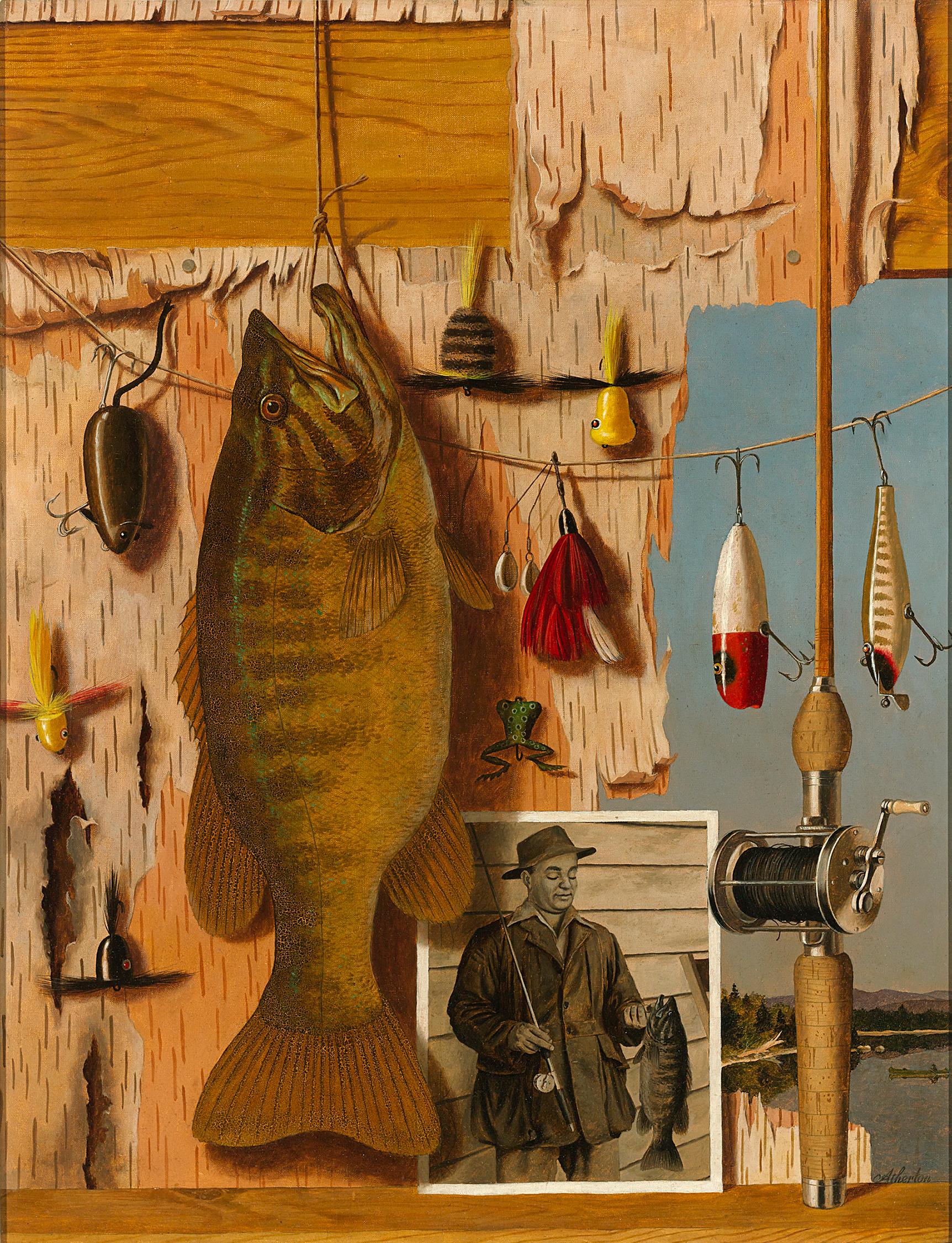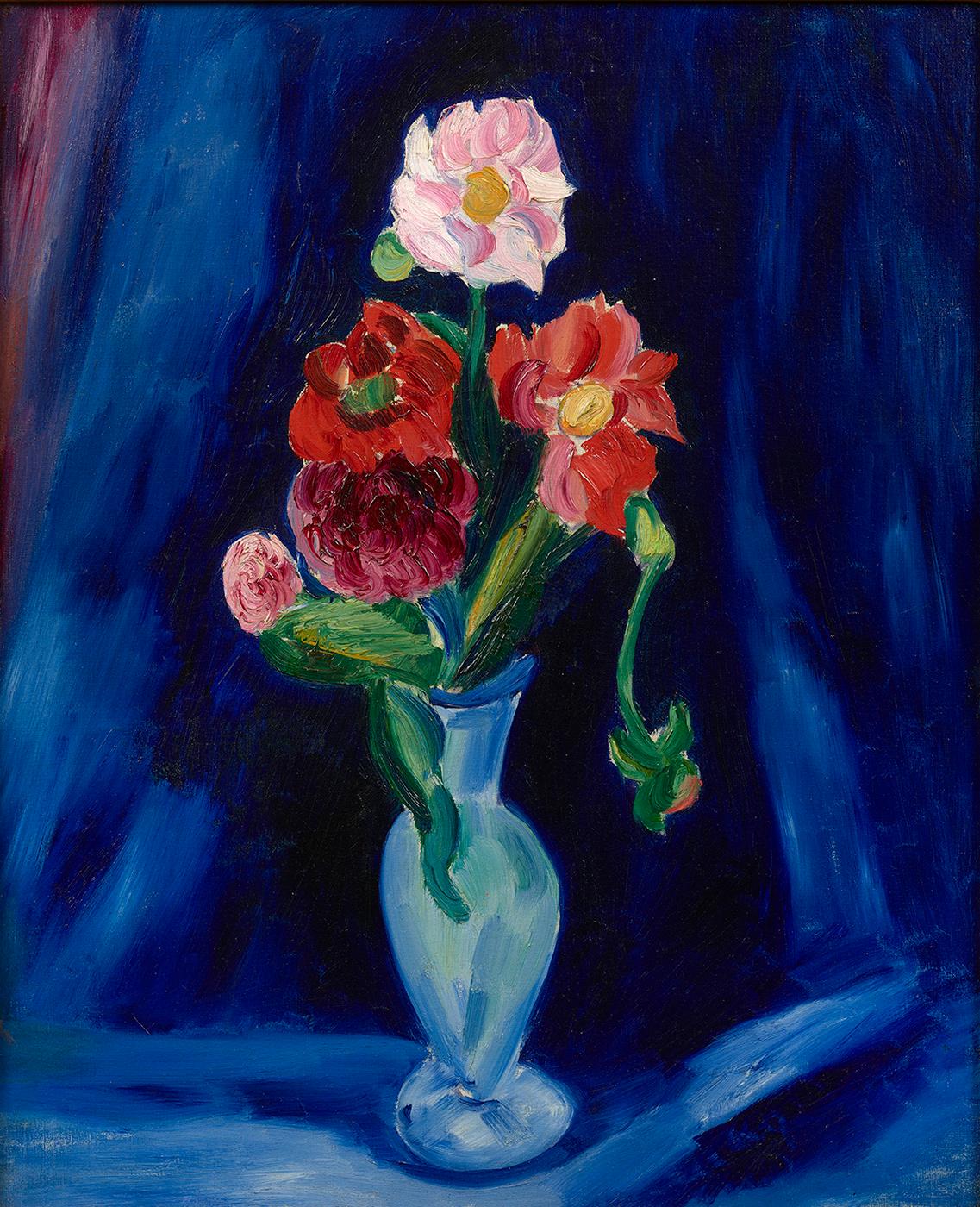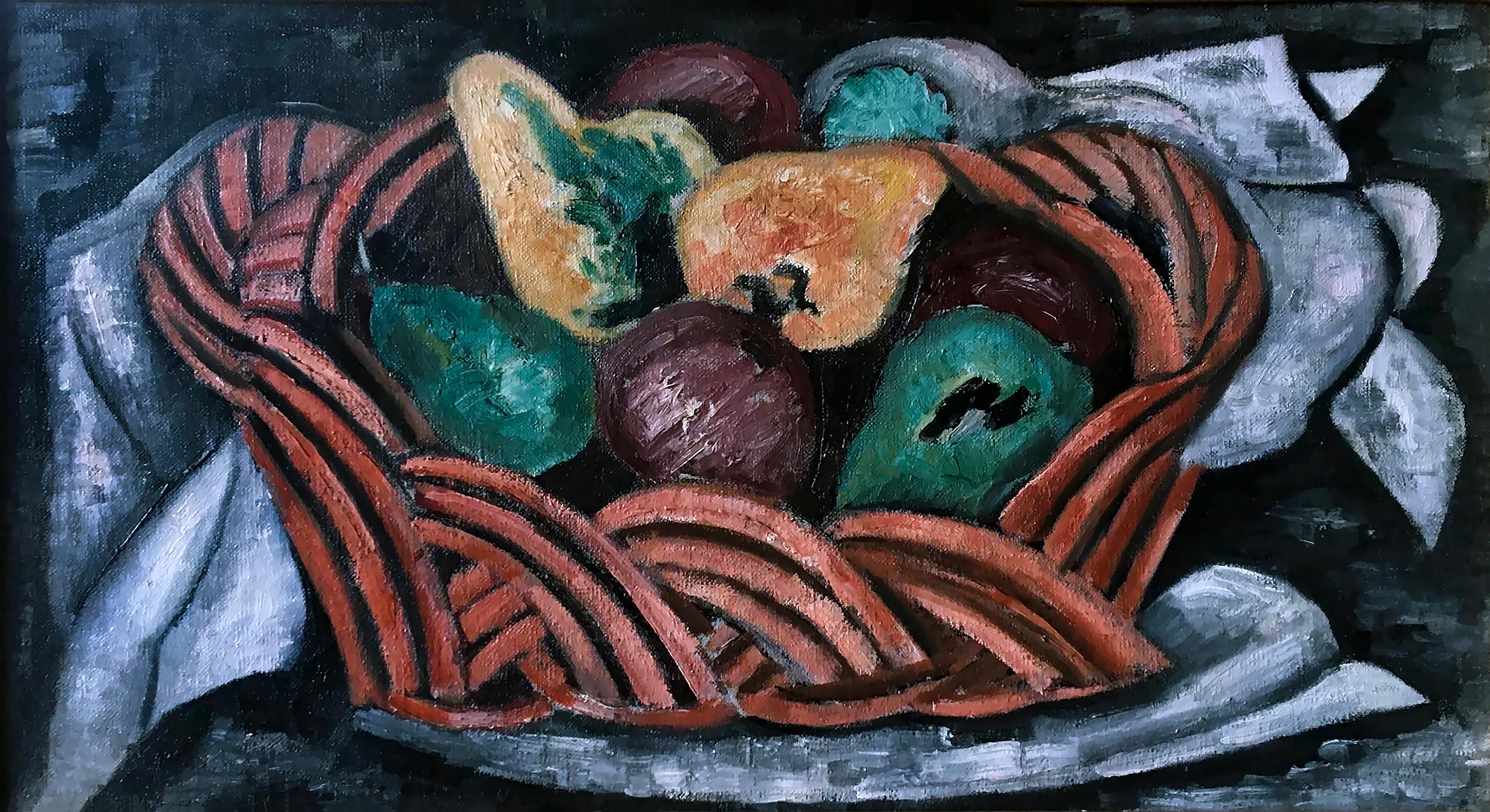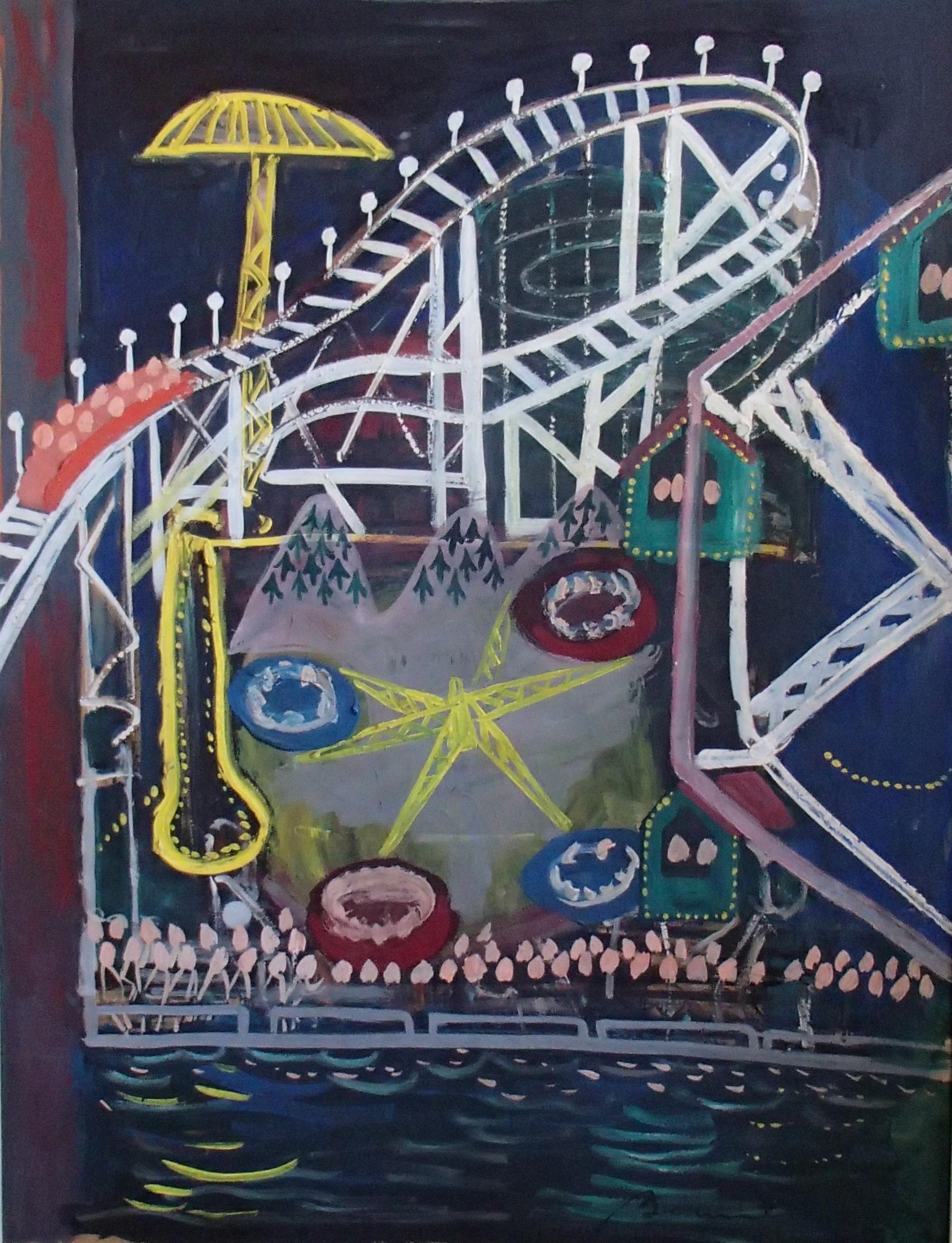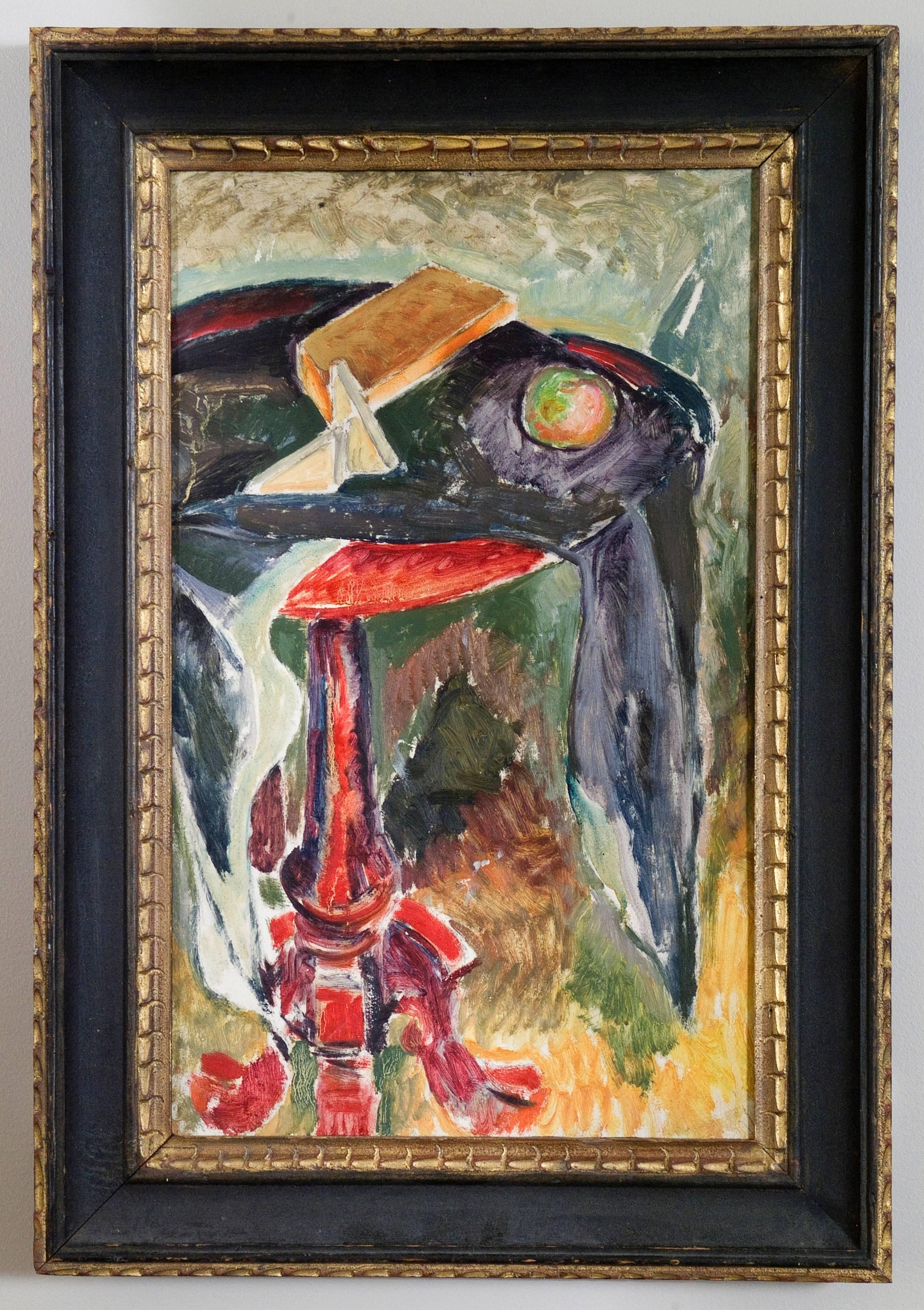Emil GansoStill Life with Flowersc. 1935
c. 1935
About the Item
- Creator:Emil Ganso (1895 - 1941, German)
- Creation Year:c. 1935
- Dimensions:Height: 18 in (45.72 cm)Width: 15 in (38.1 cm)Depth: 1.75 in (4.45 cm)
- Medium:
- Movement & Style:
- Period:
- Condition:
- Gallery Location:Fairlawn, OH
- Reference Number:
Emil Ganso
Emil Ganso was born in Halberstadt, Germany, in 1895 and came to the United States as a teenager. By 1914, Ganso was taking evening classes at the National Academy's School of Fine Arts while supporting himself as a baker. His work was soon identified by Erhard Weyhe who went on to show Ganso's work at the Weyhe Gallery. Ganso first exhibited at the Society of Independent Artists in 1921, as well as at the Salons of America from 1922–25. By 1925, Weyhe Gallery began to represent Ganso, which gave him the funds to spend his first summer in the art colony of Woodstock, New York in 1926. Weyhe Gallery continued to exhibit Ganso's work through the 1940s. In Woodstock, Ganso met George Ault, Doris Lee, Charles Rosen, Katherine Schmidt, Eugene Speicher, Alexander Brook, Louis Bouché, Konrad Cramer, Leon Kroll and George Bellows leading Ganso to settle in Woodstock and continue to benefit from Woodstock connections throughout his life. In 1927, the same year he settled in Woodstock, Ganso began to share a studio with Jules Pascin. Ganso printed Pascin's lithographs and prepared a paper for him in 1927–28 while Pascin was in America. In 1929, Ganso visited Pascin in Paris. Perhaps it was this Paris trip that sparked Ganso's interest in photography. By 1930, he was exploring photography as an art form, as well as an aid to his art compositions. Konrad Cramer, Yasuo Kuniyoshi, and Russell Lee were other Woodstock artists who joined Ganso in these photography pursuits. Ganso received a Guggenheim Fellowship in 1933, which he used to study and paint in Europe. In the 1930s, Ganso also kept a studio at 54 West 74th Street, an artists' building, where Walter Pach and Theresa Bernstein also had studios. Leonard Bocour who founded Bocour Artists Colors, which in the late 1940s developed Magna paints and the first acrylics credits Ganso, inspiring him to create artist paints and introduced him to the major artists of the 1930s, including Yasuo Kuniyoshi and Reginald Marsh. Ganso was the first artist Bocour visited while still in high school in 1930 and Ganso taught Bocour how to mix paints and grind his pigments. According to an oral history Bocour gave to the Archives of American Art, Ganso was the master theoretician and leading technical person in Woodstock who all the major artists came to for help with their color due to Ganso's library of German art books including Alexander Dorner's The Way Beyond "Art": The Work of Herbert Bayer which was not translated into English until 1947. In 1930, Ganso began to be invited to exhibit at the Corcoran Gallery of Art, Washington, DC (1930–35); the Art Institute of Chicago; the Wichita Art Museum, Kansas; the Pennsylvania Academy of the Fine Arts (1931–38); and the Whitney Museum of American Art (1927–41). Ganso also exhibited at both the 1939 New York World's Fair and the Golden Gate Exposition in San Francisco that same year. Ganso was awarded the “Pennell Memorial Medal” from the Pennsylvania Academy of the Fine Arts in 1938. As a result of the success of his art, Ganso was offered an artist-in-residence position in 1940 at the University of Iowa. It was there that he died in 1941. A retrospective exhibition for Emil Ganso was held at the University of Iowa Museum of Art both upon his death and in December 1979.
- ShippingRetrieving quote...Ships From: Fairlawn, OH
- Return PolicyA return for this item may be initiated within 10 days of delivery.
- Still Life with Vase of FlowersBy Konrad CramerLocated in Fairlawn, OHStill Life with Vase of Flowers Oil on board with incised scraffito, c. 1929-1930 Unsigned by the artist Signed and inscribed verso: "Painting by my father, Aileen B. Cramer" verso, the artist's daughter Signed with the estate stamp verso Exhibited: Gerald Peters Gallery, Konrad Cramer and the Woodstock School, 2000. (label, see photo), Ny-00457-38-C H. V. Allison Galleries...Category
1920s American Modern Paintings
MaterialsOil
- LiliesBy Jane PetersonLocated in Fairlawn, OHJane Peterson (1876-1965) Lilies Oil on canvas, 1952-1953 Signed by the artist lower right: JANE PETERSON (see photo) Painting size: 29 x 23 inches Frame size: 38 x 32-1/2 x 1-1/2 inches Exhibited: The Pennsylvania Academy of the Fine Arts: One Hundred and Forty Eighth Exhibition of American Painting and Sculptures, January 25-March 1, 1953 (Photo of original label). Original tacks on stretcher where label was afixed. Label stolen while on exhibition. Exhibited: Childs Gallery, Boston, 2019- 2023 Jane Peterson was an artist who achieved significant critical attention and adulation over the course of her career. Following her first American solo exhibition in 1909, a critic observed, “There is not a dull canvas in the entire collection and everything is interesting”.1 Thirty-five years later, Historical Records published her biography in the almanac Prominent Women of New York.2 Regardless of her success, Peterson remained pragmatic as she always sought to challenge herself with new ideas and techniques. She spent a lifetime immersed in the practice of painting; as a student, teacher, and gifted artist. Peterson was a painter with little interest in self-promotion or the conventional achievements of an artist, as a result there has only been a moderate body of scholarship written about her posthumously. Peterson’s legacy is her brilliant oeuvre of impressionistic paintings, held by collections such as the Metropolitan Museum of Art, the Philadelphia Museum of Art, and the Brooklyn Museum of Art. "Jennie Christine Peterson was born in Elgin, Illinois in 1876. From an early age Peterson, who was known throughout her life as Jane, showed a natural talent for drawing. As a teenager, having received no formal art training, Peterson sat the art aptitude test conducted by the Pratt Institute. The results were promising and, in 1895, Peterson moved to New York to study at the Pratt Institute in Brooklyn. Peterson thrived at Pratt as a conscientious student, although it was not an easy time for her financially. When her money ran low Peterson gave art lessons to other students, and also earned some income through the sale of her paintings in student exhibitions. When Peterson graduated in 1901, she began working as Drawing Supervisor of Public Schools in Brooklyn. She also continued her art education taking classes at the Art Students League. Between 1904 and 1906 Peterson worked as an art teacher in New York, Massachusetts, and Maryland. In 1907, Peterson sailed to Europe where she visited artists and museums in France, Holland, and Italy. She found Europe to be more socially progressive for women artists and decided to stay and continue her art education. While in Europe, Peterson studied under Frank Brangwyn at the London School of Art, before relocating to Paris where she received instruction from Jacque-Emile Blanche, Charles Cottet, and Claudio Castelucho. Throughout 1908, Peterson was extremely productive, creating many works in her spare time while also taking on portrait commissions to augment her income. She lived in rooms in Montparnasse located around the corner from Gertrude Stein’s salon, where on Saturday evening artists and art enthusiasts would gather to view and discuss Stein’s seminal collection of Modern art. Attending these events Peterson surrounded herself with powerful art luminaries such as Pablo Picasso, Henri Matisse, Georges Braque, André Derain, and Henri Rousseau. Peterson’s style from this period is neither entirely academic nor avant garde. Rather she blends the technical skills of her academic training with the loose brushwork and bold color palette of her contemporaries to produce paintings that are beautiful impressions of life. Peterson’s early oil paintings from Europe...Category
1950s American Impressionist Still-life Paintings
MaterialsOil
- untitled (Peonies)By Frederick Carl GottwaldLocated in Fairlawn, OHUntitled (Peonies) Oil on artist's board, c. 1910-1920's Signed by the artist in ink lower center (see photo) Provenance: Joseph Erdelac, Private Collector, Cleveland, acquired from ...Category
Early 20th Century American Impressionist Still-life Paintings
MaterialsOil
- Les Fruits 2By Charles Harris ( Beni Kosh )Located in Fairlawn, OHLes Fruits 2 Oil on masonite, 1967 Signed and titled lower right (see photos) Signed with the estate stamp verso: Beni Kosh Collection #254 (see photo) Condition: Good Board size: 7 ...Category
1960s Contemporary Still-life Paintings
MaterialsOil
- Still Life with Peaches and GrapesBy D.M. RidleyLocated in Fairlawn, OHStill Life with Peaches and Grapes Oil on paper, 1890 Signed and dated lower right (see photo) Image size: 5 8 5/8 inches Frame size: 10 x 13 1/2 inches Housed in the original frame ...Category
1890s American Realist Still-life Paintings
MaterialsOil
- Full BloomBy Robert HallowellLocated in Fairlawn, OHFull Bloom Oil on canvass, 28 x 21 1/2 inches Signed lower right: Robert Hallowell Provenance: Estate of the artist Marbella Gallery, New York Illustrated in Ma...Category
1930s American Impressionist Still-life Paintings
MaterialsOil
- The Bass Season by John AthertonLocated in New Orleans, LAJohn Atherton 1900-1952 American The Bass Season Saturday Evening Post cover, June 29, 1946 Signed "Atherton" (lower right) Inscribed "The Bass Season opens in the east July 1st /...Category
20th Century American Modern Still-life Paintings
MaterialsCanvas, Oil
- FlowersBy Marsden HartleyLocated in New York, NYOn verso: Marsden HartleyCategory
20th Century American Modern Still-life Paintings
MaterialsOil
- Basket with FruitBy Marsden HartleyLocated in Miami, FLBold outlines and strong weighty forms coalesce with a compositional delicacy that forms the hallmark of Hartley's work. The work has a long and distinguished provenance and exhibit...Category
1920s American Modern Still-life Paintings
MaterialsOil, Canvas
- "Coney Island" Brooklyn NYC Amusement Park Mid-century American Scene WPA ModernBy Ludwig Bemelmans, 1898-1962Located in New York, NY"Coney Island" Brooklyn NYC Amusement Park Mid-century American Scene WPA Modern Ludwig Bemelmans (1898 – 1962), “Coney Island" 35 x 27 inches Oil on board Signed lower left Origin...Category
1940s American Modern Landscape Paintings
MaterialsOil, Board
- Still Life (double-sided)By Alfred Henry MaurerLocated in Concord, MAALFRED MAURER (1868-1932) Still Life (double-sided), n.d. Oil on board 22 x 13 ½ inches Signed verso: A. H. Maurer PROVENANCE Estate of Gaston Lachaise [Salander-O'Reilly...Category
1920s American Modern Still-life Paintings
MaterialsOil, Board
- Wild Flowers Vibrant Colorful Modernist Oil PaintingBy John WengerLocated in Surfside, FLJohn Wenger (1887-1976) celebrated easel painter and stage set designer whose career included 25 solo shows in the USA, Canada, and Europe. He created set designs for such plays as "Ile", "Petrushka", "Funny Face", and Rhapsody In Blue". John Wenger's art is included in many museums in and out of the USA. John Wenger was born on June 16, 1887 in Elizabethgrad, Russia. Wenger was born an artist, and at the age of three was painting (playing) with brushes and paint while his father, a local artist who painted scenery for the traveling theater, worked on drop scenes. His mother disapproved of this and tried to keep her son from playing with these "toys." When John Wenger was several years older, he attended Gihnazia, which is equivalent to high school but on a college level. Throughout his education Wenger excelled in visual arts. The staff at the Gihnazia school encouraged him to apply to the Imperial Art Academy of Odessa for a scholarship. At the age of thirteen, John Wenger became a student at the academy. For Wenger, this was his first time away from home and he found it to be difficult for several months. When he came to America in 1903, John earned his living by designing ladies costumes and jewelry at his uncles store in Newark, New Jersey. He then resumed his art studies at Cooper Union and The National Academy of Design. While in New York, Wenger found an interest in how music and theater connected to art. He rebelled against the heavy sets and hard lines of stage scenery...Category
Mid-20th Century American Modern Still-life Paintings
MaterialsOil
